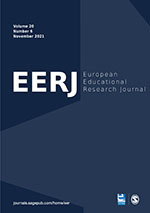Abstract:
This study focuses on the politics of time in education by analysing ‘The Future School’ reports published by Nordic state authorities between 2010 and 2015. Building on a system-theoretical understanding of social time, steering and second-order observations, we investigate how temporal political communication frames the future of Nordic basic education. By applying semantic analysis, we identified four temporal topologies according to which these reports deal with the future: (a) calculated futures based on future projections with numbers; (b) unpredictable futures based on future projections contrasting learning with adaptivity; (c) technology-determined futures; and (d) personalised futures based on child well-being. Whereas these topologies constitute a shared semantical base for discussing the future of school education, a comparison of the reports also reveals differences and paradoxes between the temporal topologies in the Nordic welfare state context.
To cite this article:
Hansen, P., Sivesind, K., & Thostrup, R. (2021). Managing expectations by projecting the future school: Observing the Nordic future school reports via temporal topologies. European Educational Research Journal, 20(6), 860-874.
This article was supported by the POLTRANS project.
